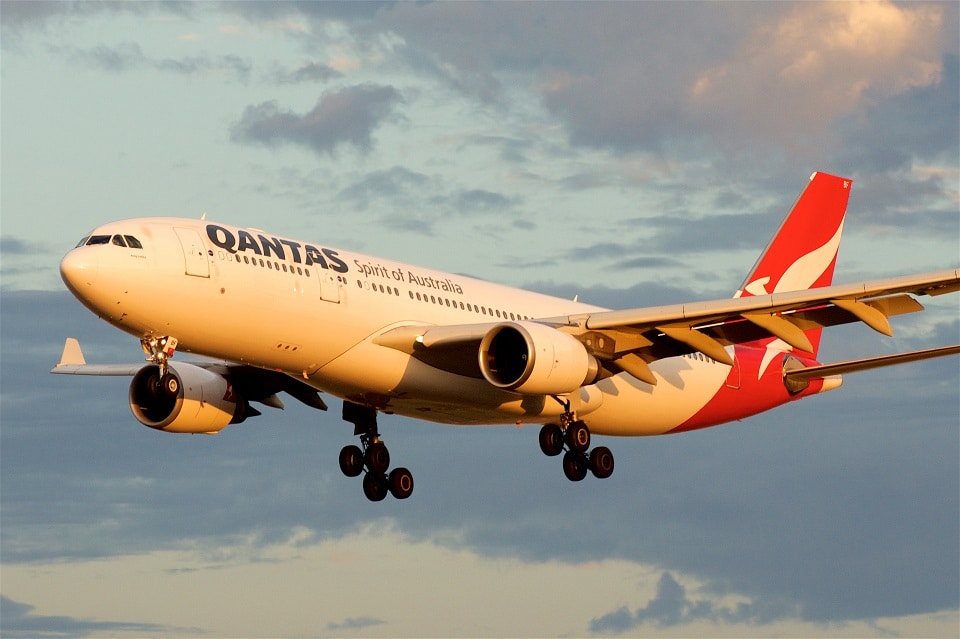Aerospace
Qantas Airbus A330 Makes Safe Landing After Engine Blowout

A Qantas Airbus A330 Aircraft, flight number QF781, has landed safely without incident in
Perth after the passengers on the Perth-bound flight reported hearing a ‘loud bang’ from one
side of the twin-engined plane engine. The Airbus A330 aircraft made a priority landing at
Perth Airport around 9:37pm local time on 25 March, arriving approximately 52 minutes
behind schedule.
Upon landing, emergency services met with the aircraft on the tarmac. However, the aircraft
taxied to the gate without assistance, with the passengers disembarking normally.
The ‘loud bang’ heard by passengers happened due to a mid-air engine blowout, therefore
resulting in the pilots having to manually shut off the affected engine, together with
requesting a priority landing into Perth Airport. Qantas also added in a statement that the
Airbus A330 aircraft was designed to operate with one engine too.
Qantas QF781 is a daily scheduled flight from Melbourne to Perth, utilising the Airbus A330
on the route. The Aircraft in question is VH-EBA, an approximately 21 years aircraft,
equipped with 2 GE CF6 engines according to airfleets.net. The Airbus A330 have been a
frequent regional workhorse in Qantas’ fleet, connecting major australian cities with major
destinations within Asia. the Airbus A330 is also used on high-density domestic routes,
similar to QF781, from Melbourne to Perth.
Engine Issues – Should you be concerned?
While engine issues are highly uncommon due to the stringent checks and quality control on
each component within the engine, there might still be exceptional occasions where such
incidents happen. However, while recognising the risks of dual engines, Aircraft
Manufacturers and Organisations have actually came up with standards so as to ensure that
an aircraft can also land on a single engine, similar to what we saw on QF781.
One of the most well known standard is Extended-range Twin-engine Operations
Performance Standards (ETOPS) which is an acronym for twin-engine operation in an
airspace further than one hour from a diversion airport at a designated one engine
inoperable speed. This ensures that twin-engined aircraft could safely operate routes over
water or remote land without an alternative airport near the flight path, which once required
aircraft with 3 or 4 engines to fly on that route.
In this case, the Airbus A330 has been certified to fly ‘Beyond ETOPS 180’, and have
received ETOPS 240 certification, which is a certification to enable the twin-engined aircraft
to fly for up to a maximum of 240 minutes with 1 engine inoperative in a cruise condition.
Currently, most twin-engined widebody aircraft in operation would generally have an ETOPS
certification of at least ETOPS 180, with the new Airbus A321LR also having ETOPS 180
certification, therefore enabling the narrowbody to fly long haul flights.

Aerospace
Boeing Transfers Rocket Stage to NASA, Paving Way for Human Moon Mission

Boeing has achieved a significant milestone by providing NASA with the second core stage of the Space Launch System (SLS) rocket.
This crucial component, crafted at NASA’s Michoud Assembly Facility (MAF), is set to propel the Artemis II crew into lunar orbit, marking humanity’s return to deep space after a 50-year hiatus.
The monumental Boeing-built rocket stage, the largest element of the Artemis II mission, will embark on a journey aboard the Pegasus barge, traveling 900 miles to NASA’s Kennedy Space Center.
Comparison of two legendary aircraft B777x vs B747 aircraft:Click here
Upon arrival, it will be meticulously integrated with other essential Artemis II components, including the upper stage, solid rocket boosters, and NASA’s Orion spacecraft within the iconic Vehicle Assembly Building. This intricate integration process is a vital step toward the eagerly anticipated Artemis II launch, slated for 2025.
“Boeing-built products helped land humankind on the moon in 1969, and we’re proud to continue that legacy through the Artemis generation,” remarked Dave Dutcher, vice president and program manager for Boeing’s SLS program. “Together, with NASA and our industry partners and suppliers, we are building the world’s most capable rocket and paving the way to deep space through America’s rocket factory in New Orleans.”
NASA, Lockheed Martin Reveal X-59 Quiet Supersonic Aircraft:Click here
The delivery of Core Stage 2 marks a significant achievement in the evolution of the SLS rocket. Towering over 200 feet and powered by four RS-25 engines, this core stage, coupled with two solid-fueled booster rockets, will generate a staggering 8.8 million pounds of thrust. This immense power is crucial to launching Artemis II and future missions into the vast expanse of space.
The SLS rocket stands unparalleled in its capability to transport both crew and substantial cargo to the moon and beyond in a single launch. Its extraordinary capacity will facilitate the delivery of human-rated spacecraft, habitats, and scientific missions to destinations including the moon and Mars, ushering in a new era of space exploration.
-

 Travel1 week ago
Travel1 week agoAir India to Expand US Operations with Three New Routes After a Decade
-

 Travel2 weeks ago
Travel2 weeks agoWhy We Should Avoid These Stamps in a Passport
-

 Airlines1 month ago
Airlines1 month agoInvestigations Reveal Fake Chinese Titanium in Boeing and Airbus Jets
-

 Tech4 weeks ago
Tech4 weeks agoChina’s CATL Plans 1,800-Mile Electric Plane Launch by 2027
-

 Airport3 days ago
Airport3 days agoTop 10 Largest Airports in the World by Size
-

 Aerospace4 weeks ago
Aerospace4 weeks agoChina’s Fighter Jets Turn Wings into Autonomous Drones
-

 Airlines4 days ago
Airlines4 days agoAir India Rolls Out A350s for Delhi-New York JFK and Newark Routes
-

 Defence3 weeks ago
Defence3 weeks agoBoeing Enhances Chinook with New Engines and Block II Upgrades at $96 Million







